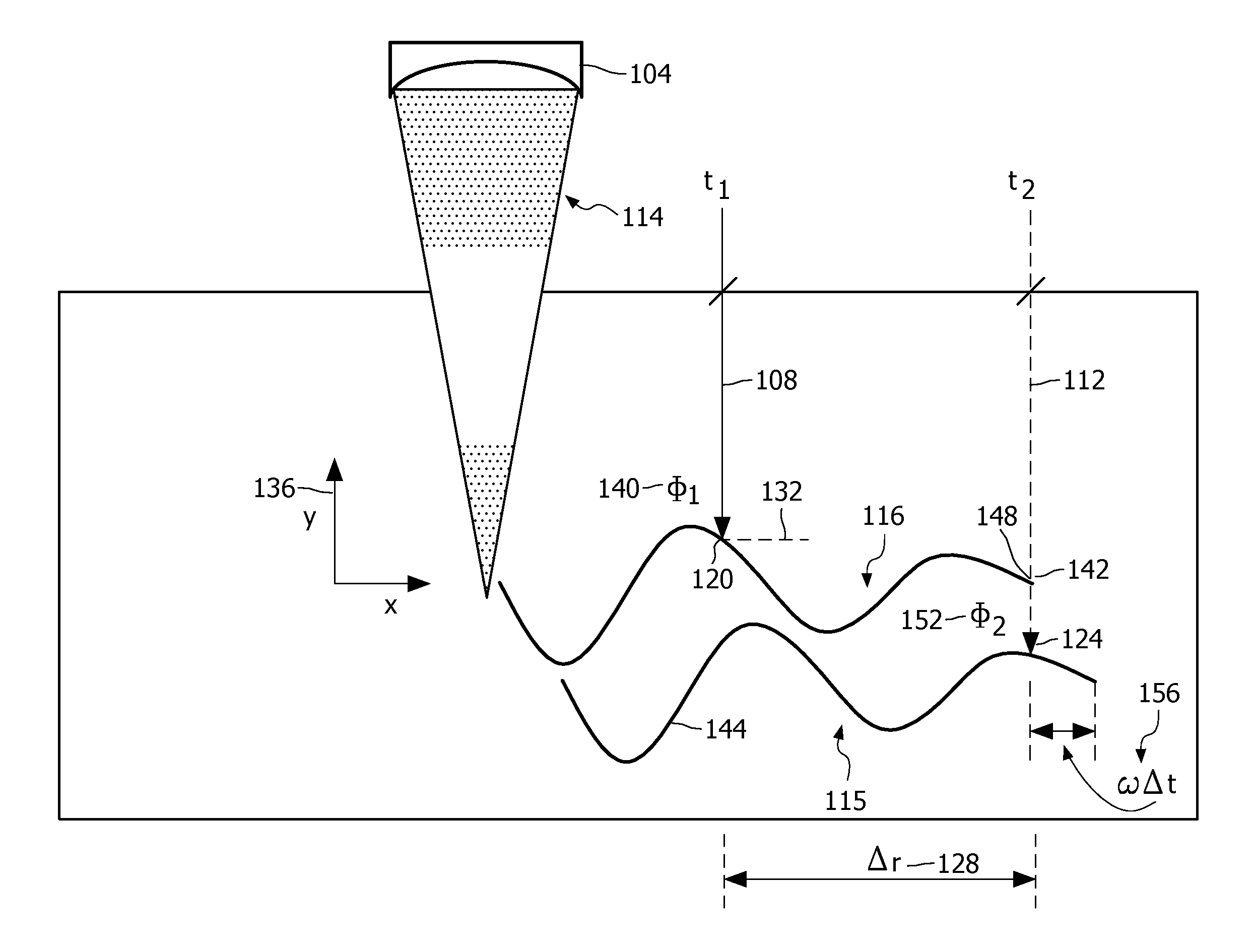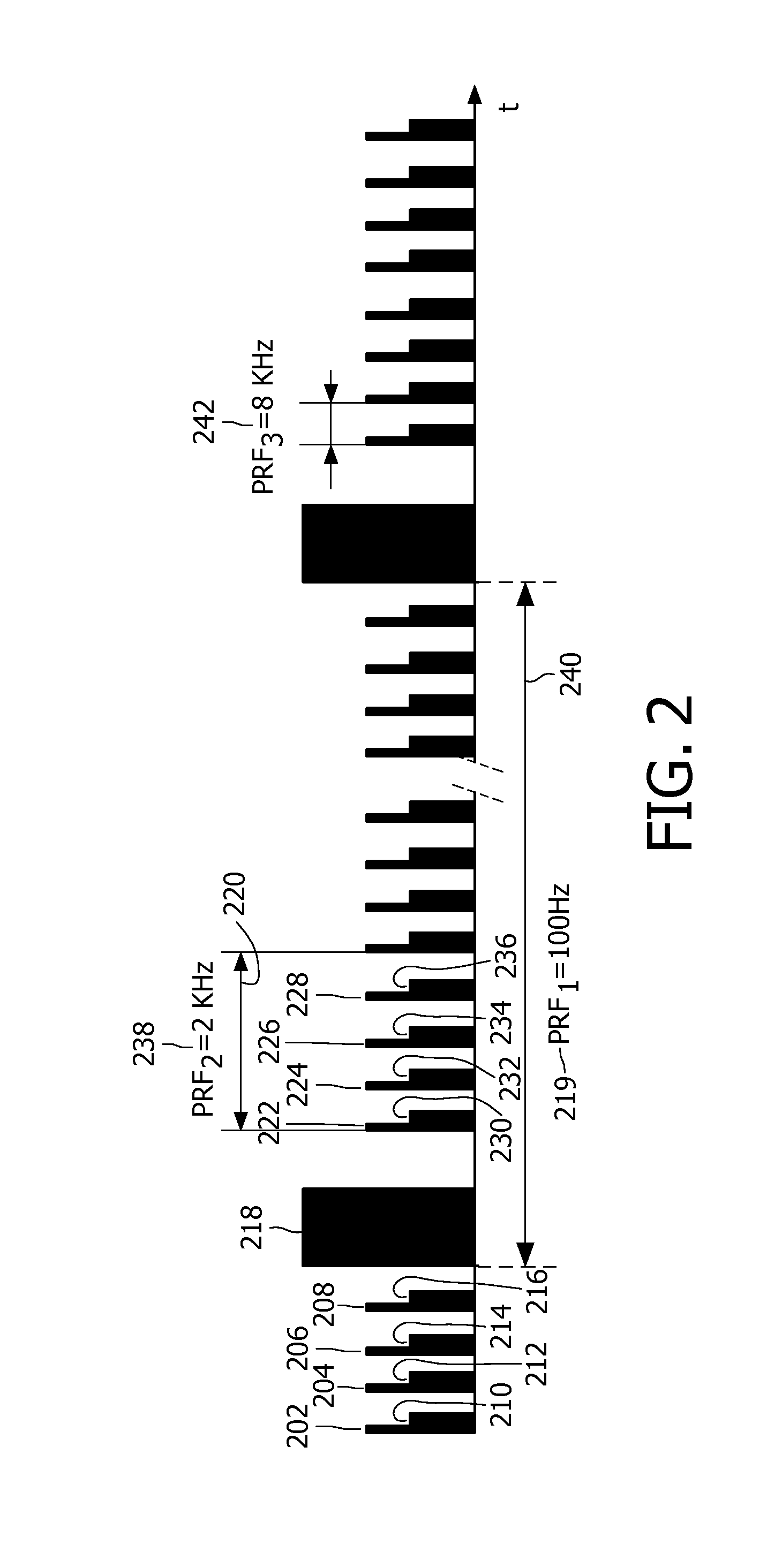Spatially-fine shear wave dispersion ultrasound vibrometry sampling
a vibrometry and shear wave technology, applied in the field of measuring a shear wave, can solve the problems of relatively low amplitude vibration of sduv, large noise contribution of vibration amplitude, and easy noise of vibration amplitude, so as to reduce noise in preparation
- Summary
- Abstract
- Description
- Claims
- Application Information
AI Technical Summary
Benefits of technology
Problems solved by technology
Method used
Image
Examples
Embodiment Construction
[0040]A general discussion is first had of one version of SDUV with faster sampling. What follows, in this context and starting with FIG. 4, is further exemplary development related to finer spatial sampling.
[0041]FIG. 1 depicts, by way of illustrative and non-limitative example, a relation between two consecutive SDUV samples. An ultrasound pushing probe 104 is shown, along with first and second tracking pulses 108, 112 issued at respective sampling times t1, t2, by an ultrasound tracking probe (not shown). The pushing probe 104 sends out a series of focused pushing pulses (or “pushes”) 114 to establish a shear wave 115, a frequency component of which (or “monochromatic shear wave”) is represented by a first trace 116. Tissue vibrates along the y-direction and the shear wave 115 propagates along the x-direction.
[0042]Two separate probes can be used for pushing and tracking respectively. However, this type of bulky configuration is not practical for clinical applications.
[0043]In ad...
PUM
 Login to View More
Login to View More Abstract
Description
Claims
Application Information
 Login to View More
Login to View More - R&D
- Intellectual Property
- Life Sciences
- Materials
- Tech Scout
- Unparalleled Data Quality
- Higher Quality Content
- 60% Fewer Hallucinations
Browse by: Latest US Patents, China's latest patents, Technical Efficacy Thesaurus, Application Domain, Technology Topic, Popular Technical Reports.
© 2025 PatSnap. All rights reserved.Legal|Privacy policy|Modern Slavery Act Transparency Statement|Sitemap|About US| Contact US: help@patsnap.com



